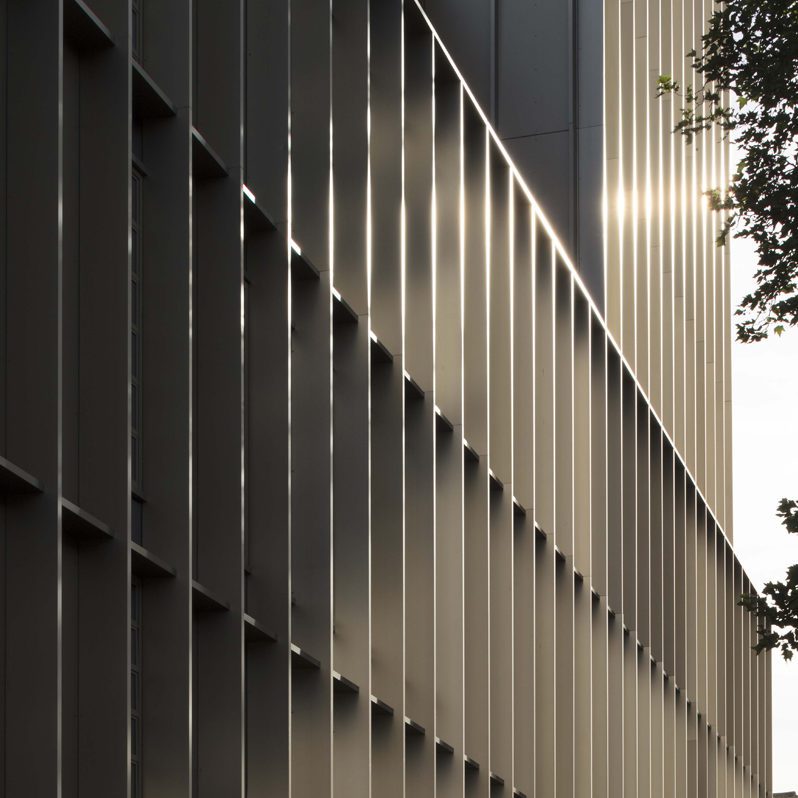Schueco Awards 2018 Overall Winner and Education Building Award: Simon Sainsbury Centre, Cambridge, by Stanton Williams
Architect: Stanton Williams
Main contractor: SDC
Specialist contractor: Prism
Client: The University of Cambridge, Cambridge Judge Business School
Schueco systems/products: FW 50+ curtain walling, AWS 70 fixed-light windows, AWS 70.HI side-hung open-out window, AWS 70.HI window system, FW 50+ hi-capped curtain walling mullion, FW 50+ SG curtain walling, AWS 114 SG TipTronic-bonded top-hung vent, FW 50+ system rooflights
Photos: Hufton & Crow
The Simon Sainsbury Centre, an expansion of Cambridge Judge Business School at the University of Cambridge by Stanton Williams, provides a hub for postgraduate and executive business education. The £22m centre adjoins the business school’s grade-two-listed Addenbrooke’s building, itself reconfigured in 1995 by John Outram. The four-storey 5,000-square-metre building replaces two former nurses’ hostels along the eastern boundary of the site. It has been designed to complement the richly decorated Outram building, itself a remodelling of the nineteenth-century hospital buildings.
As well as providing flexible education spaces for the executive education programme, the centre contains additional teaching, conferencing, office breakout and dining spaces for the school.
Stanton Williams’ design is conceived as an extension to the original hospital, drawing inspiration from the historic masonry facade designed by Matthew Digby Wyatt. This rhythm of brick buttresses and fine stone columns sets the structural and material tone of the new building. The height of the hospital wards within the existing building establishes principal floor levels and room heights across the site, while the massing reinstates the scale of the original hospital campus, helping to anchor the school in its urban setting.
Use of strong colour and refined materials, juxtaposed with exposed structural concrete, references the bold colour, rich materials and exposed structure of both the original building and Outram’s transformation. The resultingcampus creates a unified identity that transcends individual period styles.
Internal spaces have been designed to promote interaction between students, delegates and staff through the provision of generous foyer and circulation spaces. This engaging environment provides a sequence of spaces of different scales and characters, all with a strong sense of materiality and access to views. The Centre is on track to achieve a BREEAM Excellent rating for sustainability.
It uses an innovative strategy of distributed ventilation with the incorporation of 60 small heat recovery units within the building envelope to create a ‘breathing facade’.


















